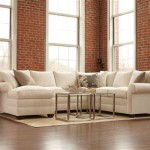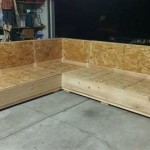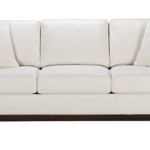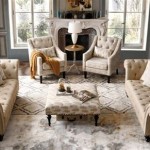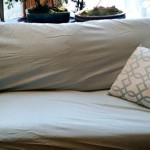Microfiber Cloth Sofas: A Comprehensive Guide
Microfiber cloth sofas have gained significant popularity in recent years, becoming a staple in contemporary homes. This upholstery material offers a unique blend of aesthetic appeal and practical advantages, making it a compelling choice for consumers seeking a durable, comfortable, and stylish seating solution. This article delves into various aspects of microfiber cloth sofas, examining their composition, benefits, maintenance requirements, and considerations for potential buyers.
Microfiber, also known as microsuede, is a synthetic fabric composed of extremely fine fibers, typically polyester or a blend of polyester and nylon. These fibers are significantly thinner than silk or cotton, contributing to the fabric's soft texture and dense weave. The tight weave inherent in microfiber construction is crucial to many of its distinctive properties, including its stain resistance and durability.
The process of manufacturing microfiber involves extruding the raw materials through spinnerets to create the ultra-fine fibers. These fibers are then woven or knitted into a variety of fabric structures, which are subsequently treated to enhance their performance characteristics. This treatment may include brushing to create a suede-like nap, dyeing to achieve the desired color, and applying stain-resistant finishes.
Understanding the Benefits of Microfiber Sofas
One of the primary reasons for the popularity of microfiber sofas is their exceptional durability. The tightly woven fibers create a strong and resilient fabric that can withstand considerable wear and tear. This makes microfiber an ideal choice for households with children or pets, where furniture is frequently exposed to heavy use and potential damage.
The resilience of microfiber stems from the density of its weave. Unlike natural fibers, which can be easily pulled or snagged, the tightly packed fibers of microfiber resist unraveling and tearing. This inherent strength translates to a longer lifespan for the sofa, making it a cost-effective investment in the long run.
Stain resistance is another significant advantage of microfiber. The tightly woven fibers create a barrier that prevents liquids and spills from immediately penetrating the fabric. This allows ample time to blot up spills before they can set in and cause permanent stains. However, it's important to note that while microfiber is stain-resistant, it is not entirely stain-proof. Prompt action is still necessary to effectively remove spills and prevent lingering discoloration.
The comfort afforded by microfiber sofas is also a major draw for consumers. The ultra-fine fibers create a soft and luxurious texture that is gentle to the touch. This plush feel enhances the overall seating experience, making microfiber sofas a comfortable and inviting addition to any living space.
Furthermore, microfiber is often hypoallergenic, making it a suitable choice for individuals with allergies or sensitivities. The tightly woven fibers prevent dust mites and other allergens from easily penetrating the fabric, reducing the risk of allergic reactions.
Maintenance and Cleaning of Microfiber Sofas
Proper maintenance is crucial to preserving the appearance and longevity of a microfiber sofa. Regular cleaning is essential to remove dust, dirt, and other debris that can accumulate over time. The recommended cleaning method varies depending on the manufacturer's instructions and the type of stain involved.
For routine cleaning, vacuuming the sofa regularly with an upholstery attachment is highly recommended. This helps to remove loose particles and prevent them from becoming embedded in the fabric. A soft-bristled brush can also be used to gently loosen and lift debris from the surface.
When dealing with spills, immediate action is paramount. Blot the affected area with a clean, absorbent cloth to remove as much liquid as possible. Avoid rubbing the spill, as this can spread the stain and force it deeper into the fibers. For water-based spills, plain water may be sufficient to remove the stain. However, for oil-based spills or stubborn stains, a specialized microfiber cleaner may be necessary.
It is crucial to test any cleaning product on an inconspicuous area of the sofa before applying it to the entire stain. This helps to ensure that the cleaner does not cause discoloration or damage to the fabric. Follow the manufacturer's instructions carefully when using any cleaning product and allow the treated area to dry completely before using the sofa.
In some cases, professional cleaning may be required to address heavily soiled or stained microfiber sofas. Professional cleaners have access to specialized equipment and cleaning solutions that can effectively remove stubborn stains and restore the fabric to its original condition. Before hiring a professional cleaner, it is important to inquire about their experience with microfiber upholstery and to obtain references.
Factors to Consider When Purchasing a Microfiber Sofa
Before purchasing a microfiber sofa, several factors warrant careful consideration. These include the quality of the microfiber, the construction of the sofa frame, and the overall design aesthetic.
The quality of the microfiber can vary significantly depending on the manufacturer and the materials used. Higher-quality microfiber will typically be denser, softer, and more durable than lower-quality alternatives. Inspecting the fabric closely and reading reviews can help to assess the quality of the microfiber.
The construction of the sofa frame is also a critical factor to consider. A well-constructed frame will provide adequate support and prevent the sofa from sagging or warping over time. Look for frames made from solid hardwood or reinforced metal, which are generally more durable than those made from particleboard or other composite materials.
The design aesthetic of the sofa should complement the overall style of the room. Microfiber sofas are available in a wide range of colors, styles, and sizes, making it possible to find a sofa that seamlessly integrates with the existing decor. Consider the size and shape of the room when selecting a sofa, and choose a style that reflects personal preferences and lifestyle.
The care code associated with the sofa is also important to note. This code provides guidance on the appropriate cleaning methods for the fabric. Common care codes include "W" (water-based cleaning), "S" (solvent-based cleaning), "WS" (water- or solvent-based cleaning), and "X" (professional cleaning only). Understanding the care code will help to ensure that the sofa is properly maintained and cleaned without causing damage.
Finally, budget is a significant consideration for most consumers. Microfiber sofas are available at a variety of price points, depending on the quality of the materials, the construction of the frame, and the brand. Setting a budget beforehand can help to narrow down the options and avoid overspending.
Beyond these primary considerations, evaluating the sofa's cushion fill is equally crucial. Options range from foam to feather blends, each influencing comfort and durability. High-density foam cushions often offer firmer support and resist sagging, while feather-filled cushions provide a softer, more luxurious feel but may require more frequent plumping. Some sofas use a combination of both, balancing comfort and support. Understanding the cushion fill will contribute to long-term satisfaction with the furniture.
Assessing the sofa's dimensions in relation to the room's layout is important. Consider factors such as doorway widths, traffic flow, and the placement of other furniture. A sofa that is too large can overwhelm a small space, while a sofa that is too small may look out of place in a larger room. Measure the available space carefully and use painter's tape to outline the sofa's footprint on the floor to visualize its placement. This step helps prevent purchasing a sofa that does not fit well within the intended environment.
Examining the stitching and seams of the sofa is another indicator of quality. Tight, even stitching suggests careful construction and a higher level of durability. Look for reinforced seams in areas that are subject to heavy use, such as the arms and back of the sofa. Irregular or loose stitching may indicate poor craftsmanship and could lead to premature wear and tear. These details, although subtle, contribute significantly to the overall longevity and appearance of the sofa.
When browsing microfiber sofas, consider the brand's reputation and warranty policies. Established brands often have a track record of producing high-quality furniture and providing excellent customer service. A comprehensive warranty can offer peace of mind, protecting against manufacturing defects and premature wear. Read the warranty terms carefully to understand what is covered and what is not. Choosing a sofa from a reputable brand with a solid warranty can minimize the risk of costly repairs or replacements in the future.

Microfiber Friend Or Foe Cleanfax

How To Clean A Microfiber Couch Family Handyman

How To Clean A Microfiber Couch The Home Depot

Benefits Of Using Microfiber Fabric For Upholstery Al Nassaj

Microfiber Vs Chenille A Guide To The Most Durable Sofa Fabric Vertu Living

Lexicon Janne Microfiber Sofa In Tan

Global United Reclining Transitional Microfiber Fabric Sofa Urban Living Furniture Los Angeles Ca

Sofa Fabric Types Crate Barrel

How To Clean A Microfiber Couch And Remove Pen Marker Stains

Casainc 85 In Modern Grey Microfiber Sofa At Com

